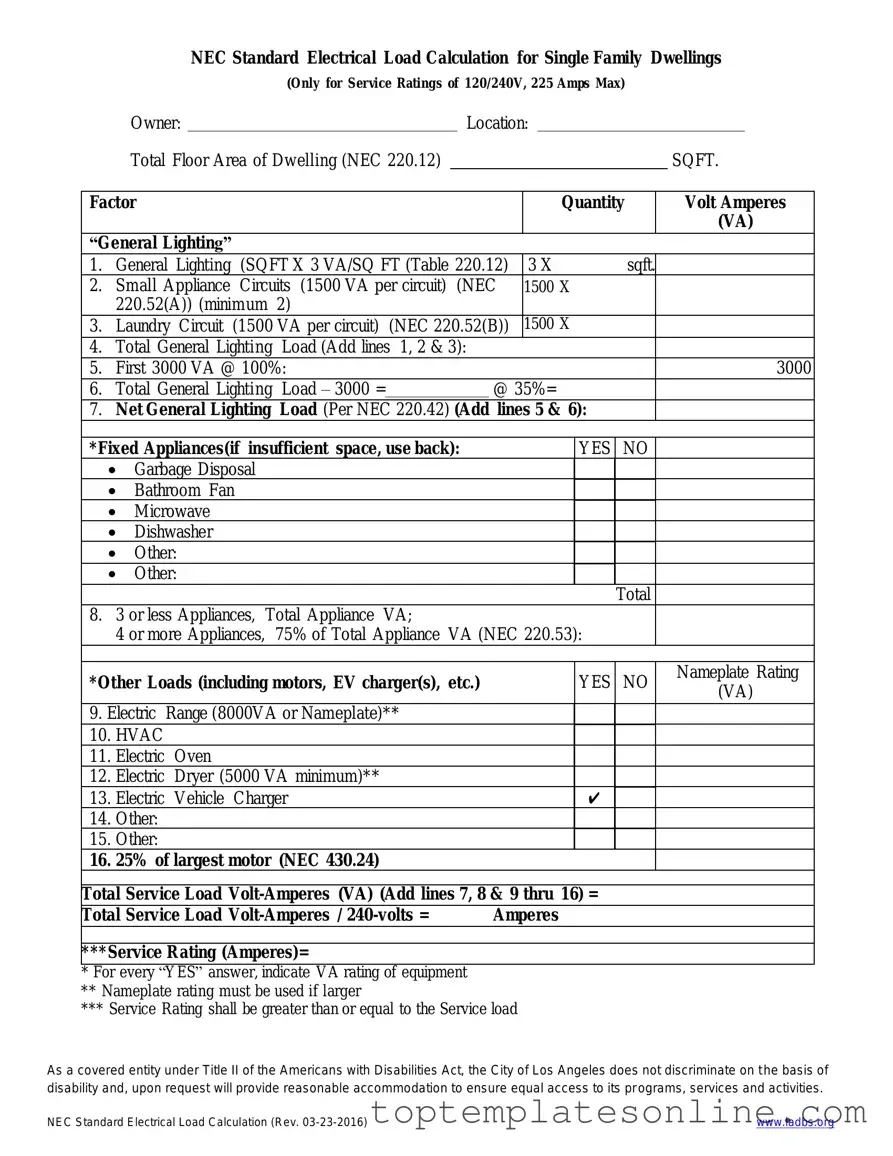Fillable LADBS NEC Standard Electrical Load Calculation Form
The LADBS NEC Standard Electrical Load Calculation form is a crucial document used to assess the electrical load requirements for buildings in Los Angeles. This form helps ensure that electrical systems are designed safely and efficiently, meeting both local codes and national standards. Understanding how to complete this form is essential for contractors and property owners alike.
Customize LADBS NEC Standard Electrical Load Calculation Here
